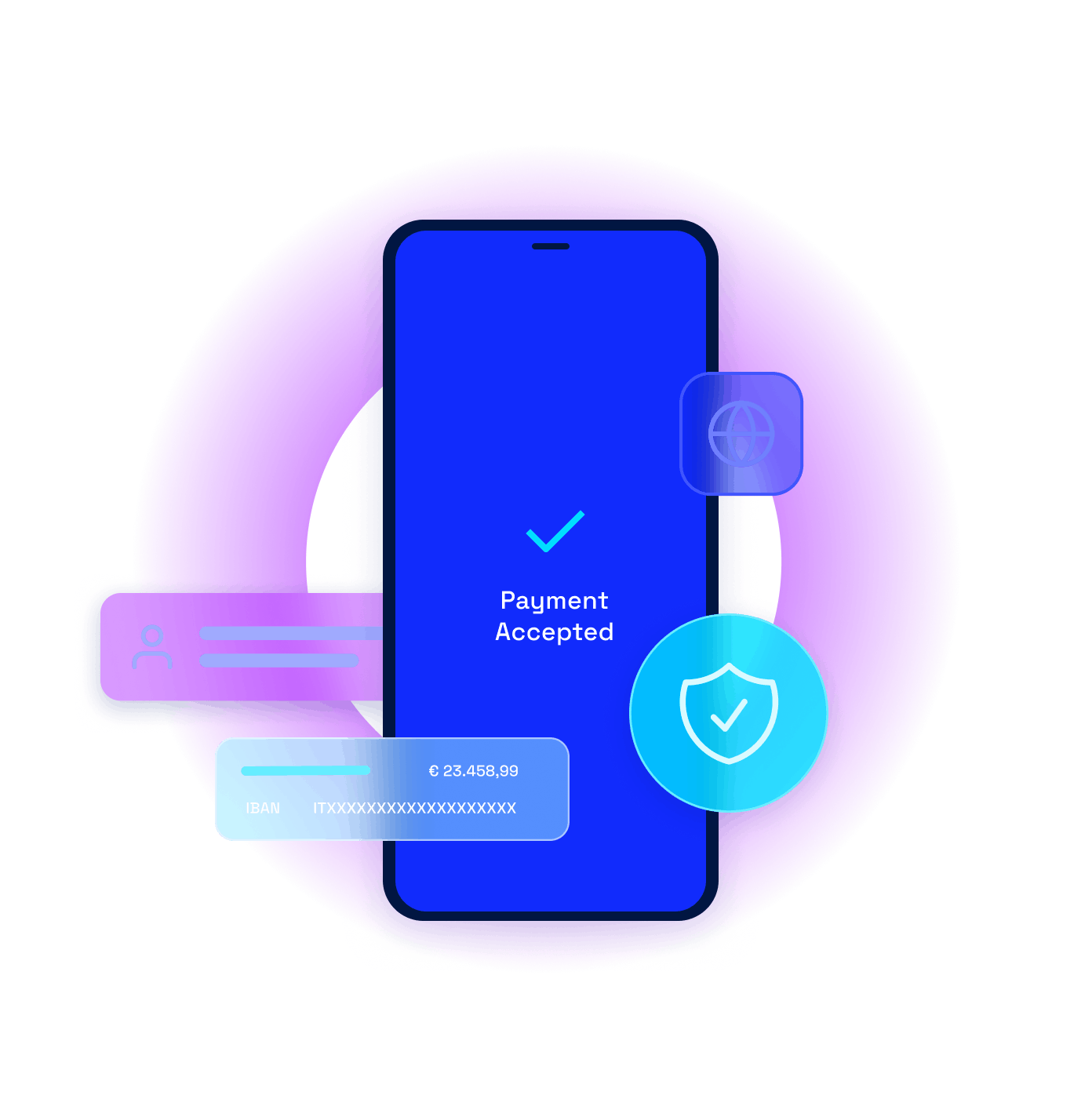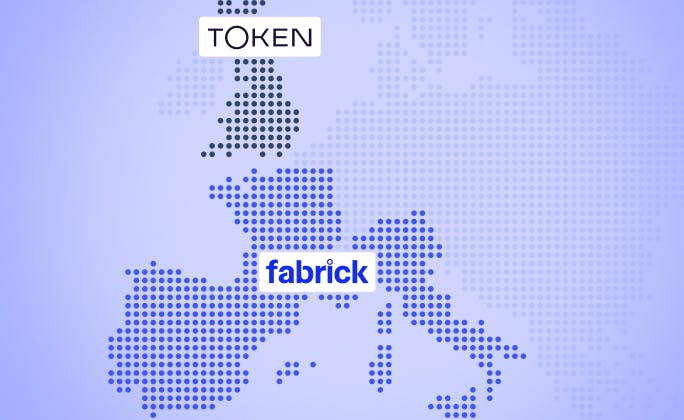PISP – Payment Initiation
The solution that allows your company to accept payments via pre-filled bank transfers, easily integrating them into your Ecommerce or app.

Reach new customers thanks to our partnership with Token.io
Through a strategic partnership with Token.io, Fabrick can support you in scaling businesses also in the UK, and reaching new target markets by providing an Account-to-Account payment solution to B2B and B2C UK customers.
Reach new customers thanks to our partnership with Token.io

Through a strategic partnership with Token.io, Fabrick can support you in scaling businesses also in the UK, and reaching new target markets by providing an Account-to-Account payment solution to B2B and B2C UK customers.
Optimise customers' experience with Pay by Bank
PISP is Fabrick's service that allows anyone to initialise payments between accounts. In simple terms, it offers a pre-filled, fast and secure bank to bank payment method:

Pre-filled transfers can be carried out directly from the company's website or app, without the need to access home banking.

PISP is the ideal payment method for both consumer (B2C) and business (B2B) customers.

The transaction data is pre-filled to avoid manual compilation errors.

Purchase orders and related PISP payments are related to simplify the reconciliation of collections.

The PISP service does not require intermediary networks between the company and the customer, for a streamlined and faster management of the transaction.

The absence of intermediary networks involved in the service allows for lower processing costs per transaction.
How A2A payments work
Via a simple and secure technology integration, Fabrick's PISP service, in partnership with Token.io, provides companies and organisations from all sectors with a Pay by Bank payment method that enhances the user experience and simplifies collections and reconciliation processes:
In the initial payment phase (payment initiation), the end customer chooses the 'Payment from Account' service (payment initiation PIS or Account to Account A2A).
The user is directed to a web page where they select their bank, accept terms and conditions of service and the privacy policy. If the user's bank is UK based the service is provided by Token.io.
The end customer authorises the transaction through Strong Customer Authentication (SCA), with a process similar to that used for online card purchases, then Fabrick sends the receipt and transmits the transaction outcome to the payer and payee.
The credit transfer can be credited in real time for Instant SEPA (EU) and Faster Payments (UK), or within two working days for ordinary SEPA (EU). In both instances, the credit transfer is irrevocable, guaranteeing the beneficiary the certainty of receipt of the funds.
Accepting all money transfers
PISP is much more than a service for accepting credit transfers, it is the gateway to transfers of money in any context and sector.

Ecommerce payments
Offering alternative payment methods like PISP transfers is a winning strategy to save on commissions and attract clients that prefer not to pay by card.

Donations and crowdfunding
PISP payments are the simplest and most immediate way to make a donation or join a crowdfunding campaign. There is no need to even fill in the transfer details.

Pay By Link payments
You can offer pre-filled transfers by integrating them in payment services via a link, for a frictionless experience and reduced risk of error.

High-value transactions
Thanks to the PISP payment method you can accept high-value payments at the best conditions and avoiding card limits.

Payments from ERPs
Not simply a collection solution: if PISP transfers are integrated into ERP software, they are the ideal tool for making outgoing payments, such as balancing invoices payable.
Benefits across all industries
The PISP solution can be applied to different industries to respond to the specific needs of both B2B and B2C, payment initiation can be an added value in the customer journey.

This solution can integrate perfectly into the purchasing process and work with other Open Banking solutions, ensuring frictionless transactions for both B2B and B2C.

Technological integrations such as Fabrick's PISP service are the key to enriching one's commercial offering, speeding up time to market and responding promptly to market evolutions.

From travel to hotels and restaurants, allowing customers to pay easily via bank transfers can make the difference: the goal here is to enhance customer experience and save on time and resources.

Easily allow customers to settle fees and insurance premiums with Account-to-Account transfers readily available and integrated in your buying journey.

Streamline payments and reconciliation from the car dealership network and suppliers, while giving customers the opportunity to pay with pre-filled transfers.

Leveraging technology platforms and solutions, and developing smart solutions are all key for banking and financial services today, making the best out of Open Banking opportunities.
Latest Insights

Embedded Lending revolutionizes financing for businesses and consumers

Ransomware: a growing trend in the cyberfraud landscape

Payment orchestration for optimised lending platforms: a complete guide
Would you like more details about this product? Please fill out the form.
Contact our specialists to identify the most suitable solution for your needs.
Advertising message for promotional purposes. Fabrick provides this solution in the UK through its partnership with Token.io and in Italy, Spain and France. If your business has a registered office in UK, Italy, Spain or France and you would like more information, you can contact us here.